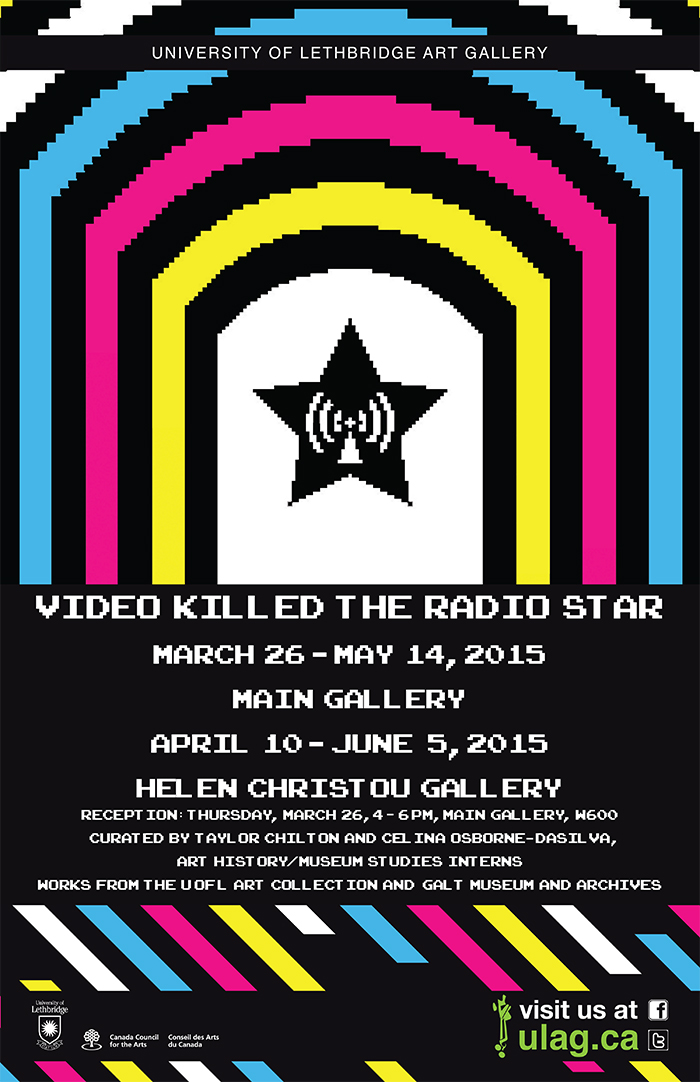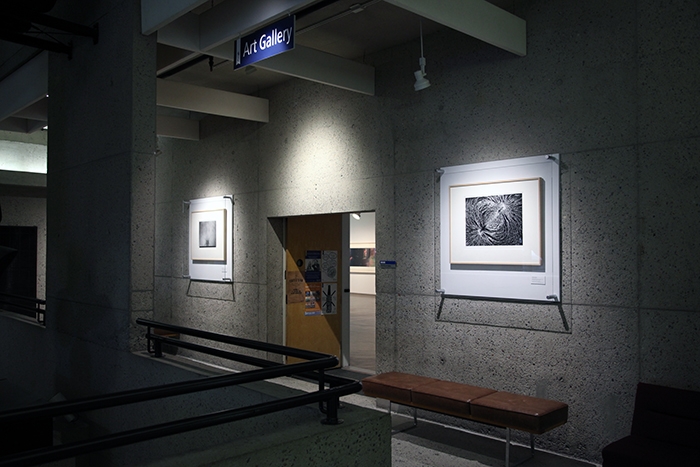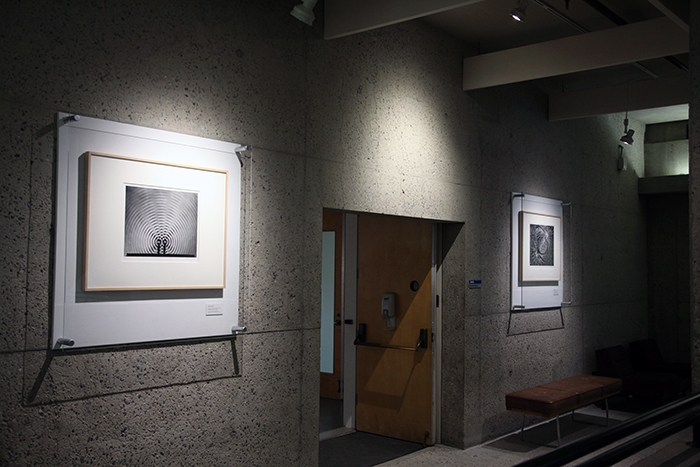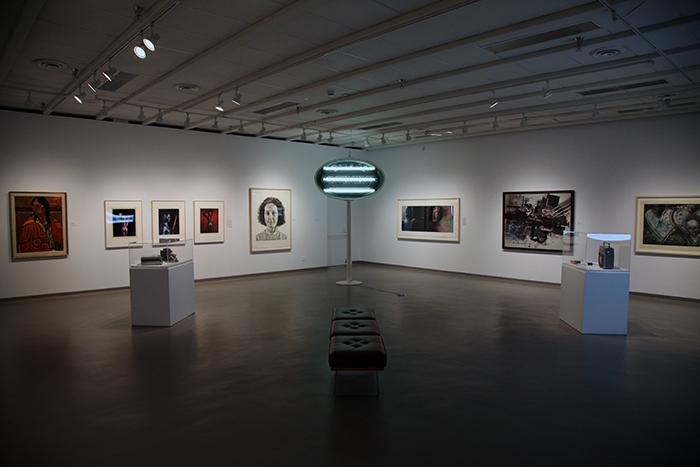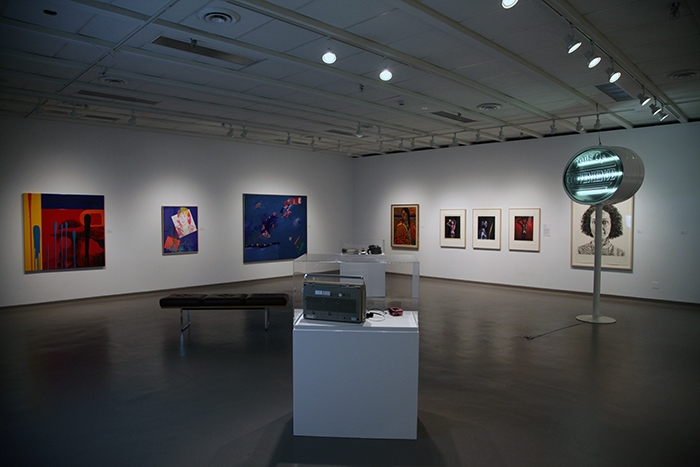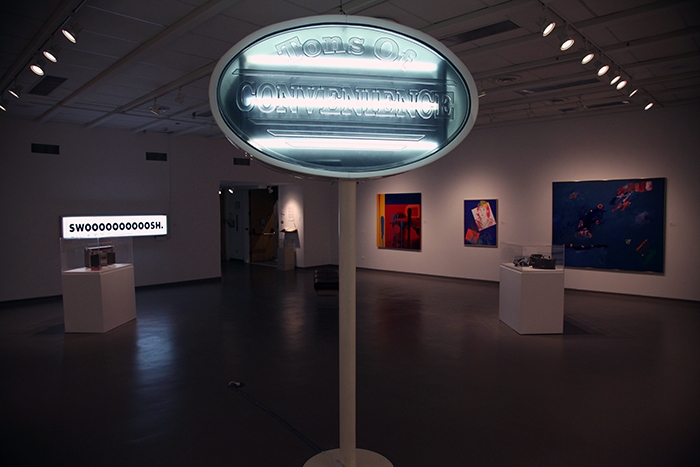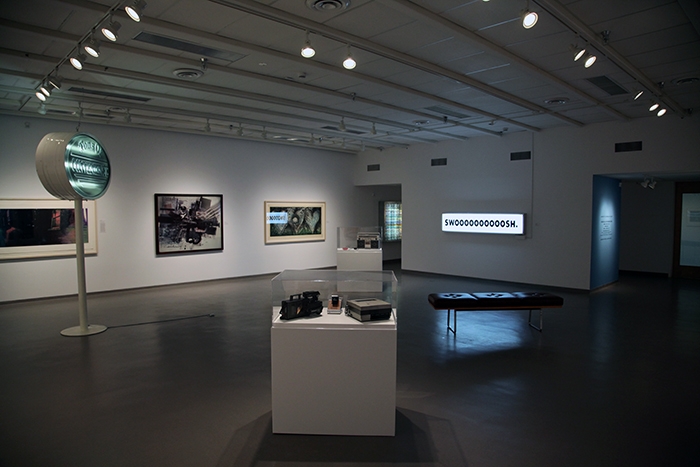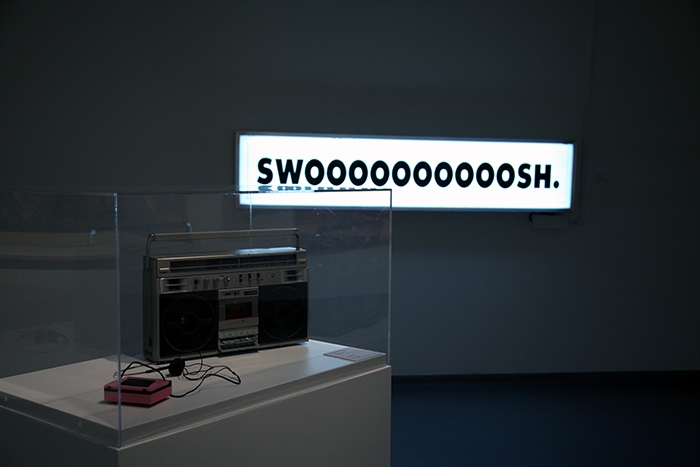Main Gallery
Video Killed the Radio Star
March 26 – May 14, 2015
Curated by Taylor Chilton & Celina Osborne-Dasilva, Museum Studies Interns
Works from the U of L Art Collection and Galt Museum & Archives
Senior students in the Art History/Museum Studies program explore art, ideas and objects from the 1980s by curating an exhibition from the U of L Art Collection and Galt Museum & Archives.
Curatorial Statement
For our Museum Studies Internship, Celina and I were given the task of co-curating an exhibition focused on works created in the 1980s. We were unsure how to approach a decade neither of us had personally experienced and only knew about through a ‘retro ‘80s’ framework. How could we do justice to the decade and for gallery visitors from the era as well as a younger generation who see the period as history? Looking from the outside in, we considered the ‘80s from multiple angles: the fashion, the music, the technology and, of course, the art. Our decision to look at the technology of the ‘80s alongside art came from our interest in technological advances in communication and entertainment, but also in the way artists used technology to open up new possibilities in form and imagery. Video art first appeared before the 1980s, but took off during this decade. With (relatively) smaller and more affordable equipment, and its important connection to social activism around HIV/AIDS, feminism and identity politics, video art presented itself as art and a mode for change. As well, museums and galleries became more accepting of the art form in this decade and cable television was also a prime spot to showcase this work.
At the time, and still true today, video art was not highly collected. Video works do not have the financial value of other art, such as paintings, and the technology rapidly changes, making the equipment and specific formats obsolete. Given that this exhibition is drawn from the University of Lethbridge collection, we did not have access to video works, but other art/technology works were still available to us and we chose to include photography by Berenice Abbott and Ian Baxter&, electric signage by Vera Gartley, and mixed media works by Richard Kerr and Robert Rauschenberg. Even though not all of the works exhibited incorporate technology in their creation, such as Ray Mead’s large-scale painting, these more ‘traditional’ media were still being created at this time and were just as relevant to ‘80’s art production. As well, by including objects from the Galt Museum & Archives, we aim to give a taste of what technology looked like decades ago. For example, the featured Access Computer, once used by the University of Lethbridge’s Faculty of Management, shows the early beginnings of the personal computer and what would eventually lead to a laptop. The Coleco video game system may not have been used by artists, like the Polaroid camera would have, but it helps provide a sense of the era and find inspiration for what was possible both in art and technology during the 1980s.
– Taylor Chilton, Museum Studies Intern
The 1980s was a decade when the world was in constant flux. It was 10 years of untamed fashion styles and of remarkable technological innovations. Madonna was singing about being a virgin, men had mullets, and the Rubik’s Cube seemed impossible to solve, while Western society was being introduced to new forms of entertainment and devices that changed the way that people lived. During the ‘80s, people hopped to a beat with either a Walkman in their ears or a Boombox on their shoulder. Originating in Japan in 1979, the Sony Walkman allowed music to be mobile and cassette ‘mixtapes’ started the evolution of the personal playlist. The Boombox was first established in the ‘70s, but it earned its popularity in the ‘80s as the loud, portable music-box. Video gaming also flourished in the ‘80s. Who could forget “Pacman”? A minimalistic form of entertainment that was addicting to play and it was totally rad! An unforgettable change during the decade, (besides Michael Jackson’s physical transformations), was the personal computer and cellphone. Computers were developed for household use during the early ‘80s and in ‘84 the mobile phone was officially available to the public. It didn’t end there. The ‘80s also welcomed the home video recorder, the VCR, CDs, cable television and of course, the “World Wide Web”.
The technological advances in the ‘80s also affected the art world. Though it was first introduced in the ‘60s, video art took off in the ‘80s. Artists used the television screen as their canvas and established videotape montage as a new art form by including television broadcasts or fragments of movies and private videotapes within their works. This idea of the ‘moving image’ in the ‘80s also gave rise to multimedia installations with the use of large-screen projections and other ways of creating interactivity with the viewers in the gallery space. Artists continued to push the boundaries and produced works that evoked a new visual language from a multi-media context by combining photography with digital imagery. The ‘80s introduced the world to big hair and what Ferris Bueller did on his day off, but it also changed the idea of art and technology.
– Celina Osborne-Dasilva, Museum Studies Intern
